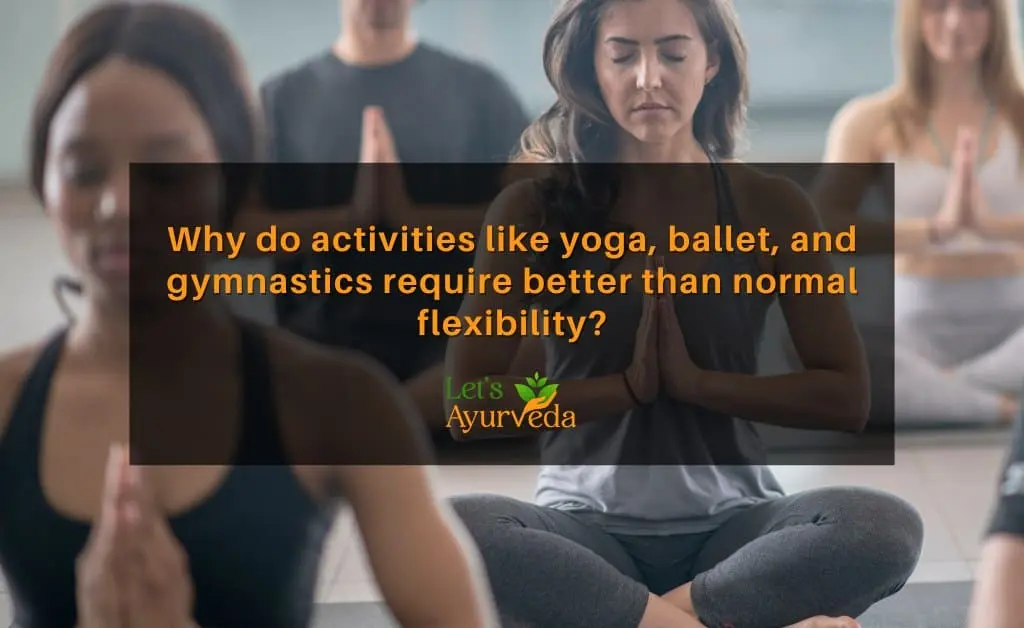In today's fast-paced world, many individuals are drawn to activities that promote physical health and provide mental and emotional well-being. Yoga, ballet, and gymnastics are among the popular choices for those seeking a holistic approach to fitness. One common thread that ties these activities together is the requirement for better-than-normal flexibility.
Understanding the Basics: Flexibility Defined
Understanding what flexibility means before delving into each activity's specifics is essential. Flexibility is all about how well you can move your joints and muscles. It allows you to move your body freely without pain or discomfort. Achieving better flexibility means stretching and bending further, which is particularly important in yoga, ballet, and gymnastics.
Yoga: The Harmony of Body and Mind
Hatha Yoga: The Physical Foundation
Yoga is an ancient practice involving physical poses, breathing exercises, and meditation. Hatha yoga, one of its most well-known forms, focuses on the physical aspects of yoga. Flexibility is vital in yoga, enabling practitioners to perform asanas (poses) correctly. Improved flexibility leads to better posture, reduced risk of injury, and increased strength.
The Mind-Body Connection
Yoga emphasizes the connection between the body and mind. Flexible muscles and joints aid in achieving poses and enhance relaxation and mental clarity. Flexibility allows you to release tension and stress, promoting a sense of well-being.
Ballet: Grace and Precision
Fluid Movements
Ballet is a dance form known for its graceful and precise movements. Dancers must display incredible flexibility to execute high extensions, arabesques, and splits. Enhanced flexibility improves the aesthetics of ballet and reduces the chances of injuries resulting from demanding positions.
Expressive Art
In ballet, the body becomes a medium for artistic expression. Flexible dancers can convey emotions and tell stories through their movements more effectively. This captivating art form relies on the dancer's ability to stretch and extend their limbs gracefully.
Gymnastics: Strength and Agility
Power and Control
Gymnastics is a challenging sport requiring physical abilities like strength, coordination, and balance. Flexible joints and muscles are essential for gymnasts to safely execute flips, twists, and somersaults. The greater the flexibility, the more control a gymnast has over their body during complex maneuvers.
Injury Prevention
The risk of injury in gymnastics is high due to the physically demanding nature of the sport. Maintaining flexibility through regular stretching routines helps gymnasts avoid strains, sprains, and muscle tears. It acts as a protective mechanism, ensuring the longevity of a gymnast's career.
Why Do Activities Like Yoga, Ballet, and Gymnastics Require Better Than Normal Flexibility?
Activities like yoga, ballet, and gymnastics require better-than-average flexibility because they involve a wide range of motions and positions that demand increased flexibility to perform correctly and prevent injury.
Conclusion
In conclusion, activities like yoga, ballet, and gymnastics require better than normal flexibility because it is the cornerstone of their practice. Flexibility enhances performance, reduces the risk of injury, and contributes to the overall well-being of practitioners. Whether you're a yogi seeking inner peace, a ballet dancer aiming for grace, or a gymnast chasing medals, flexibility is your ally.
FAQs
Is flexibility the same as being able to touch your toes?
No, flexibility encompasses a broader range of motion in various joints and muscles, not just touching your toes. It involves flexibility in the entire body.
Can anyone improve their flexibility through these activities?
Most individuals can enhance their flexibility with consistent practice and proper guidance.
How often should one stretch to improve flexibility for these activities?
Incorporating stretching exercises into your routine at least 3-5 times a week is recommended for noticeable improvements.
Are there any age restrictions for starting yoga, ballet, or gymnastics?
While there are no strict age limits, it's advisable to consult with a professional trainer, especially for adults who are new to these activities.
Can flexibility help prevent injuries in everyday life as well?
Yes, improved flexibility can reduce the risk of injuries during daily activities, such as lifting objects, bending, and reaching.
So flexibility isn't just a physical attribute in yoga, ballet, and gymnastics; it's a gateway to achieving excellence and holistic well-being. So, embrace the journey of improving your flexibility, and you'll discover a world of physical and mental rewards awaiting you.






